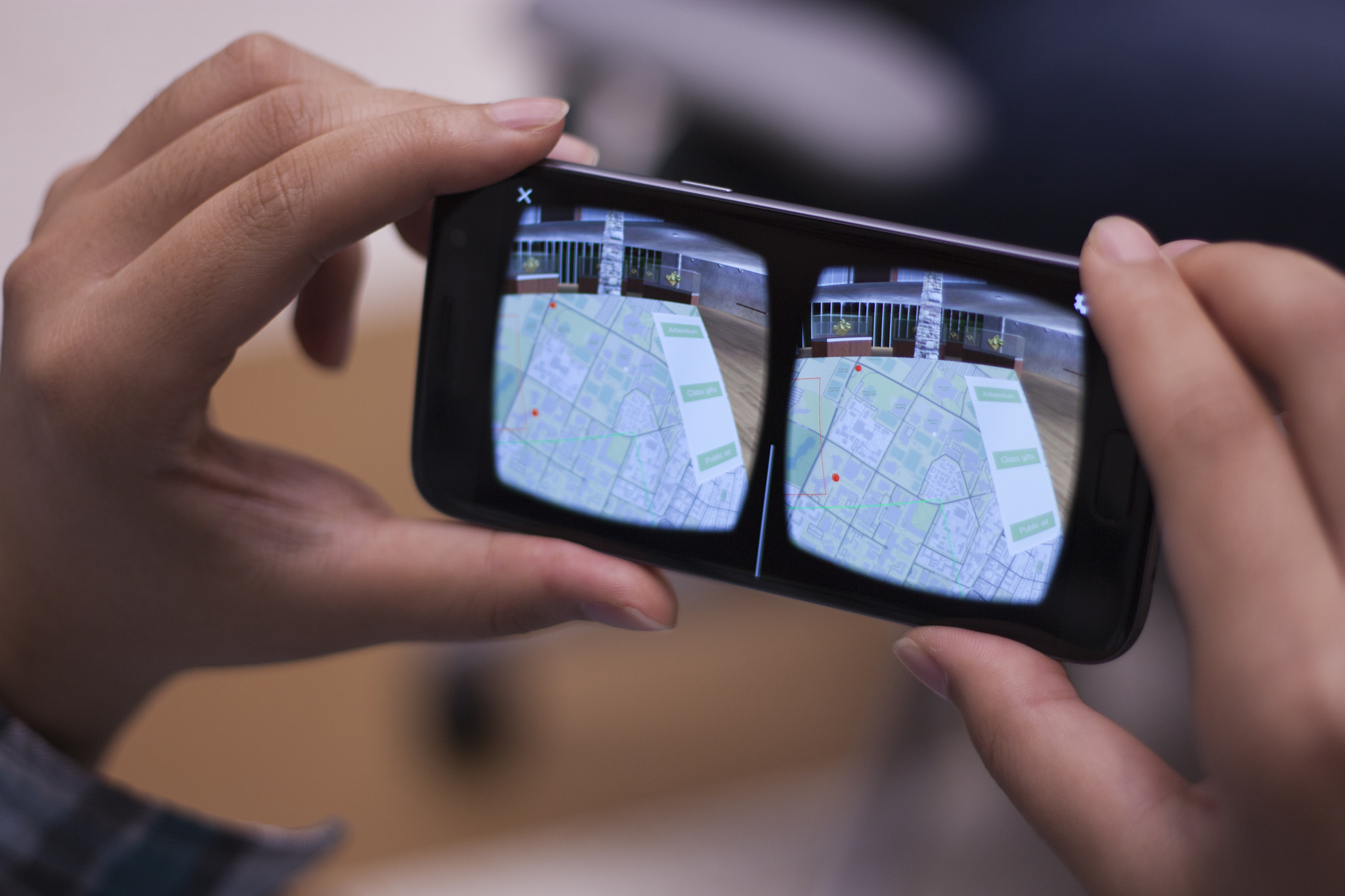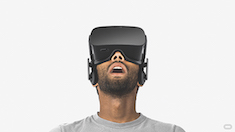
11 ideas win Journalism 360 Challenge on Immersive Storytelling
In March 2017, Knight Foundation, along with partners Google News Lab and the Online News Association, launched the Journalism 360 Challenge to advance the use of virtual reality and other immersive storytelling approaches in the field of journalism.
The open call for early stage ideas drew 800 applicants from around the world. It showed that journalists are seizing the opportunity to use emerging technology to create fresh forms of storytelling and engage with audiences in new ways. At the same time, innovation in immersive storytelling is taking place across the news media ecosystem. Promising ideas for new tools and methods are being developed by startups, as well as traditional news organizations, local news outlets, universities and public radio.
Today we are announcing support for 11 of these projects. Each was chosen for its potential to bolster the collective understanding of how new forms of immersive storytelling can meet the changing information needs of communities and individuals, and strengthen the future of journalism.
For example, one of the winners from the Massachusetts Institute of Technology will build a camera and lighting system to use immersive storytelling approaches to uncover hidden experiences that lie deep in the ocean.
At Arizona State University, professor Retha Hill will help journalists and others create location-based data visualizations in a virtual reality format.
Another winning project by The Washington Post, focuses on the development of a smartphone tool that aims to better understand the bias readers bring to a story. It will use augmented reality to analyze reader facial expressions as they interact with stories and public comments.
The winners, listed below, will receive a share of $285,000 to develop their projects and experiment with best practices, new tools and techniques for virtual, augmented and mixed reality, and 360 video.
Along with developing their early stage ideas, the winners are committed to sharing what they have created and learned with the Journalism 360 community. Journalism 360 was created last fall in collaboration with Google News Lab and the Online News Association to build a network of journalists and technologists who would exchange best practices on immersive storytelling techniques. The initiative was shaped by a 2016 Knight Foundation report, which revealed an opportunity for journalists to use virtual reality and other immersive storytelling tools to connect with audiences in new ways and and change how people interact with news and information.
We are grateful to all of the people who submitted their ideas. It was difficult to choose among so many excellent projects. We hope you will join us in celebrating the winners and stay updated on the latest findings and techniques throughout the field.
The winning projects include:
Aftermath VR app by New Cave Media ($20,000 | Project lead: Alexey Furman | Kyiv, Ukraine | @alexeyfurman): Creating an app that would apply photogrammetry, which uses photography to measure and map objects, to recreate three-dimensional scenes of news events (such as mass shootings or natural disasters) and narrate what happened through voiceover and archival footage.
AI-generated Anonymity in VR Journalism by University of British Columbia ($30,000 | Project leads: Taylor Owen, Kate Hennessy and Steve DiPaola | Vancouver, Canada | @taylor_owen, @katehennessy, @DipaolaSteve): Helping reporters test whether an emotional connection can be maintained in immersive storytelling formats when a character is algorithmically distorted so that their identity is hidden. The tool aims to provide investigative journalists with a means to preserve the confidentiality of a subject, while using an animation to ensure viewers remain emotionally connected.
Community and Ethnic Media Journalism 360 by City University of New York ($27,000 | Project lead: Bob Sacha | New York | @bobsacha): Making immersive storytelling more accessible to community and ethnic media through a program that provides hands-on training and access to equipment. The team also aims to produce a “how to” guide for others on using immersive storytelling to cover local happenings, such as festivals.
Dataverses: Information Visualization into VR Storytelling by The Outliers Collective ($25,000 | Project lead: Oscar Marin Miro | Barcelona, Spain | @outliers_es, @oscarmarinmiro): Making it easier to integrate data visualizations into immersive storytelling through a platform that would allow the integration of virtual reality videos and photos with facts. For example, a user could show a map of the Earth highlighting places without water access and linking each area to a virtual reality video that explores the experience of living there.
Facing Bias by The Washington Post ($30,000 | Project lead: Emily Yount | Washington, D.C. | @PostGraphics, @emilyyount): Developing a smartphone tool that will use augmented reality to analyze a reader’s facial expressions while they view images and statements that may affirm or contradict their beliefs. The aim is to give readers a better understanding of the bias we all bring to a story and to improve trust in news by creating a personal connection to the content.
Spatial and Head-Locked Stereo Audio for 360 Journalism by NPR ($15,000 | Project lead: Nicholas Michael | Washington, D.C. | @NPR, @nicktmichael): Developing best practices for immersive storytelling audio by producing two virtual reality stories with a particular focus on sound-rich scenes. The project will explore, test and share spatial audio findings from these experiments.
Immersive Storytelling from the Ocean Floor by the MIT Future Ocean Lab ($30,000 | Project lead: Allan Adams | Cambridge, Massachusetts | @MIT_FutureOcean, @AllanAdamsYG): Developing a camera and lighting system to produce immersive stories underwater and uncover the hidden experiences that lie beneath the ocean’s surface.
Location-Based VR Data Visualization by Arizona State University, Cronkite School of Journalism ($30,000 | Project lead: Retha Hill | Tempe, Arizona | @Cronkite_ASU, @rethahill): Helping journalists and others easily create location-based data visualizations in a virtual reality format. For example, users could explore crime statistics or education data on particular neighborhoods through data overlays on virtual reality footage of these areas.
Voxhop by Virtual Collaboration Research Inc. ($30,000 | Project lead: Ainsley Sutherland | Cambridge, Massachusetts | @VCRconnect): Making it easy to craft audio-driven virtual reality stories through a tool that would allow journalists to upload, generate or construct a 3-dimensional environment and narrate the scene from multiple perspectives. For example, a reporter could construct a three-dimensional crime scene and include voiceovers detailing accounts of what transpired in the space.
Scene VR by Northwestern University Knight Lab ($20,000 | Project lead: Zach Wise | Evanston, Illinois | @zlwise, @knightlab): Developing a tool that would make it easier for journalists and others to create virtual reality photo experiences that include interactive navigation, using their smartphone or a camera.
The Wall by The Arizona Republic and USA TODAY Network ($28,000) | Project lead: Nicole Carroll | Phoenix | @azcentral, @nicole_carroll): Examining the audience engagement power of combining an important national story with new technology by documenting all phases of the proposed border wall between the United States and Mexico. The project would use virtual reality overlaid with relevant data and include aerial video, as well as a series of documentary shorts.
r
-
Journalism / Article
-
Information and Society / Report
-
Journalism / Article
-
Recent Content
-
Journalismarticle ·
-
Journalismarticle ·
-
Journalismarticle ·





